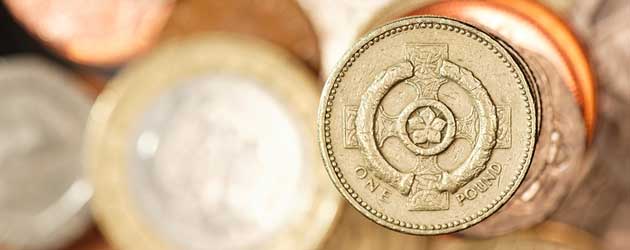
The Pound to Australian Dollar exchange rate (GBP/AUD) struck a fresh 5-month high of 1.5459 yesterday morning as the UK Unemployment Rate inched lower from 7.9% to 7.8% in March. The surprising drop in Unemployment helped Sterling to reach its highest peak against the ‘Aussie’ since January 3rd.
Despite the headline reading reflecting positively on the UK economy, the report was not all good news for Britain as the actual number of people in employment fell by -43,000 and the Average Weekly Earnings index sunk to an all-time record low of 0.4%. With the headline UK inflation Consumer Price Index holding above target at 2.8%, the deficit between wage growth and the costs of goods remains a constricting force on UK household purchasing power. Ross Walker of the Royal Bank of Scotland described “the underlying picture [as] weak”, whilst Martin Beck of Capital Economics called the figures “something of a reality check”.
However, the number of people claiming Jobless Claims declined by -7,300 as the Claimant Count fell from 4.6% to 4.5%, which reduces the burden on the UK taxpayer and bodes well for the British economy going forward. Employment Minister Mark Hoban said:
“These statistics also show that the UK’s Employment Rate, which currently stands at around 71%, compares favourably to US, where it is 67%, and the EU and the Eurozone where it is even lower – at 64%”.
Later on in the morning Bank of England Governor Mervyn King gave his 89th, and final, Quarterly Inflation Report in which he suggested that Britain would continue to build on the 0.3% first quarter growth print throughout the remainder of the year. For the first time since the financial crisis, King actually gave the UK growth forecasts an upward revision: predicting 0.5% growth in the second quarter and 1.0% overall growth in 2013:
“Today’s projections are for growth to be a little stronger and inflation a little weaker than we expected three months ago”.
The BoE Governor remained fairly dismissive of further monetary easing, commenting that the current pace of quantitative easing is “highly stimulatory” and reaffirming the Central Bank’s “commitment to meeting the inflation target”. Monetary easing is seen to drive inflation higher as the money supply increases, and for this reason his comments on bringing the inflation rate down from 2.8% towards the 2.0% target were viewed as positive for the Pound:
“Monetary policy alone, however, cannot solve all our problems. There are limits to what can be achieved by general monetary stimulus in any form”.
With Eurozone GDP contracting for a sixth consecutive quarter at -0.2% and core countries such as France, the Netherlands and Finland, being dragged into the melee of recession, the Australian Dollar struggled to find support in the currency markets as investors appetite for risk waned.
The ‘Aussie’ was also hurt by growing fears that the Reserve Bank of Australia could look to introduce further interest rate cuts later on in the year to help support the domestic economy as the mining boom comes to an end. The latest Australian budget saw Treasurer Wayne Swan predict a government deficit of around £12.6 billion in 2013; and with the high value of the Australian Dollar seen as having a negative influence on export competitiveness, the door remains open to enhanced monetary loosening.

Comments are closed.